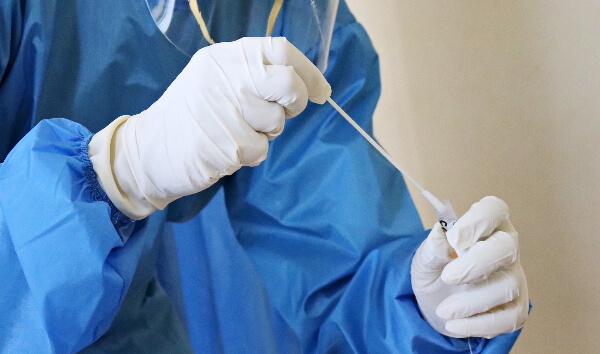Omicron Coronavirus in 2022 – Yale Medicine
Click here to read the ORIGINAL ARTICLE: “Know About the Coronavirus Outbreak.”
Experts paid, in 2022, close attention to the Omicron strains.
By Kathy Katela. Wed Aug 31, 2022
COVID-19 upended daily life in the United States for more than two years as SARS-CoV-2, the virus spreading the disease, caused surges in infections across the country. In some ways, the virus is under better control since the first cases were identified here in January 2020. But COVID-19 remains a threat—no one can predict when a new strain might surface, and many questions remain.
In 2022, the Omicron variant and subvariants have been driving infections. In June, one of these strains, called BA.5, became the predominant one in the U.S. While BA.5 appears to cause mild disease, experts believe it to be the most contagious strain of the virus so far. What’s more, it may be able to evade immunity from vaccination as well as prior infection.
While the vaccines that are available in the U.S. were designed to protect against the original strain of the coronavirus—and have been seen to weaken against infection over time—they continue to protect against severe illness and death.
Four vaccines are being administered from Pfizer-BioNTech, Moderna, Johnson & Johnson, and Novavax, and the Centers for Disease Control (CDC) endorses a clinical preference for the Pfizer and Moderna shots over J&J, based on evidence of vaccine effectiveness, safety, and rare adverse events. Vaccines are available for infants, children, and adults ages 6 months and older, and everyone ages 5 and older can get a booster shot.
In August 2022, the FDA authorized both a bivalent Pfizer-BioNTech booster shot for people 12 years of age and older, and a bivalent Moderna shot for adults 18 and older. These boosters are designed to protect against disease caused by the original strain of the SARS-CoV-2 virus, as well as the Omicron variant. Individuals can get the booster shot starting two months after completing the two-dose primary series or receiving a previous booster dose.
Scientists and public health officials continue to work as quickly as possible to address key questions such as how COVID-19 affects the body; why some people have Long COVID (or continuing symptoms the CDC calls “post-COVID conditions”); and the best ways to improve upon the vaccines, test for COVID-19, and treat people who are infected.
Below is a list of nine things you should know about the coronavirus.
1. COVID-19: By the numbers

The number of people who have died from the disease in the U.S. hit one million in May 2022. By late August of this year, the number of people who have been infected with the virus here had surpassed 94 million. The CDC provides numbers in a COVID Data Tracker that refreshes every weekday. But those numbers are based on modeling and could be revised with new data; the true numbers are more difficult to track, since not everyone who gets the virus gets tested, and home test results aren’t included in the CDC data.
COVID-19 surges can vary by location. The CDC offers a COVID-19 by County tool that can help people determine the level of risk in their county or one where they are traveling.
2. The virus can spread in multiple ways.
According to the CDC, COVID-19 is spread in three main ways:
- Breathing in air when close to an infected person who is exhaling small droplets and particles that contain the virus
- Having these droplets and particles land on the eyes, nose, or mouth
- Touching the eyes, nose, and mouth with hands that have the virus on them
In addition, droplets can land on surfaces, and people may get the virus by touching those surfaces, although, according to the CDC, this is not thought to be the main way COVID-19 spreads.
Anyone who is infected with COVID-19 can spread it to other people, even if the infected person does not have symptoms, according to the CDC. In general, the more closely you interact with others and the longer that interaction, the higher the risk of COVID-19 spread. Indoor spaces are more risky than outdoor spaces.
3. The virus continues to change.

Outbreaks of COVID-19 have come in waves in which a surge of new cases typically is followed by a decline in infections. A loosening of restrictions on mask-wearing and other mitigation efforts can precipitate a wave, as can an event or celebration period such as the winter holidays, when people are more likely to travel and gather indoors.
New variants of the virus have also prompted waves. Over the last two years, the variants Alpha, Beta, Delta (named by the World Health Organization after the Greek alphabet), and others have caused increases in cases, and illnesses ranging from mild (with no reported symptoms in some cases) to severe.
While the milder Omicron variant and its subvariant BA.5 (and its cousin, BA.4) appear to be less deadly than variants that preceded them, they can still cause severe illness and death in some people. Early indications signal that BA.5 may have some increased ability to escape immunity, including immunity from prior infections, according to a White House statement released in July. This means it has the potential to cause the numbers of infections to rise in the coming weeks, especially in areas where there is waning of immunity from vaccines and fewer people are up to date on vaccinations, the statement says.
BA.5 is believed to be the most contagious variant so far, although both infections and hospitalizations have remained relatively low compared to previous COVID-19 waves.
But even when a virus strain is associated with mild illness, some people will get very sick, and experts worry that large outbreaks could overwhelm health care systems—and provide more opportunities for the virus to mutate, laying groundwork that could become a breeding ground for more new variants.
4. Long COVID is still not well understood.

Another challenge is what the CDC has called “post-COVID conditions,” also known as Long COVID. It is now estimated that nearly 1 in 5 adults and children, including healthy ones who had mild or no symptoms during their initial COVID-19 infection, experience Long COVID, which is when new, returning, or ongoing symptoms last for weeks, months, or years. These usually start four or more weeks after the initial infection, and range from fatigue and muscle pain to—in extreme cases—serious respiratory, digestive, and neurological symptoms, as well as autoimmune conditions and multisystem inflammatory syndrome in children (MIS-C), in which different body parts become swollen.
Experts still don’t know why this occurs. While there is still a lot to learn, dedicated post-COVID condition clinics around the country are working to help treat patients with long-COVID symptoms.
5. Vaccines are key to preventing severe illness and hospitalization.
Vaccination remains a key strategy for preventing severe disease. (Breakthrough infections have increased as immunity from the vaccines wanes over time and as new variants emerge, making infection prevention difficult.)
Each person should be able to choose the vaccine and booster—or boosters if eligible—for their situation, taking into account that recommendations on timing, dosage, and number of shots vary based on such factors as age and health status. More information on where to get COVID-19 vaccines and boosters is available on Vaccines.gov.


